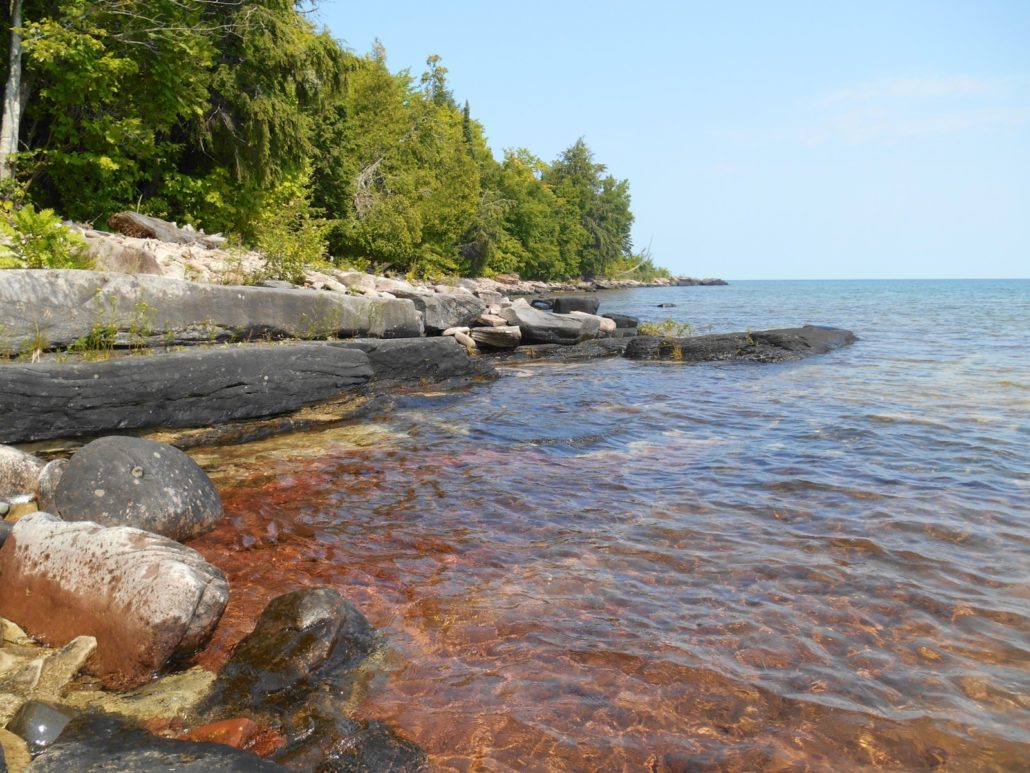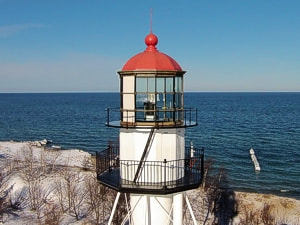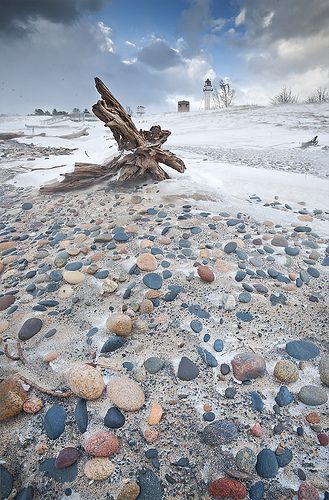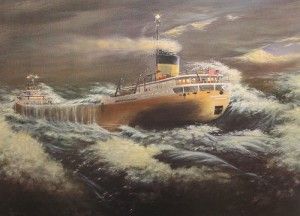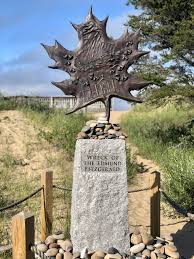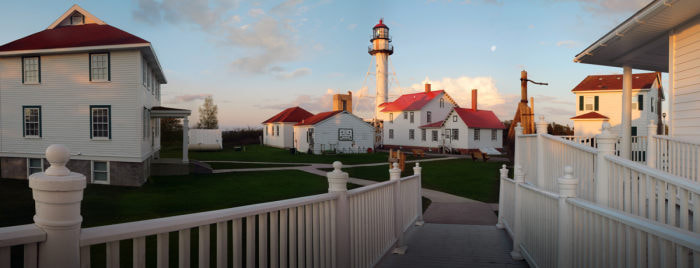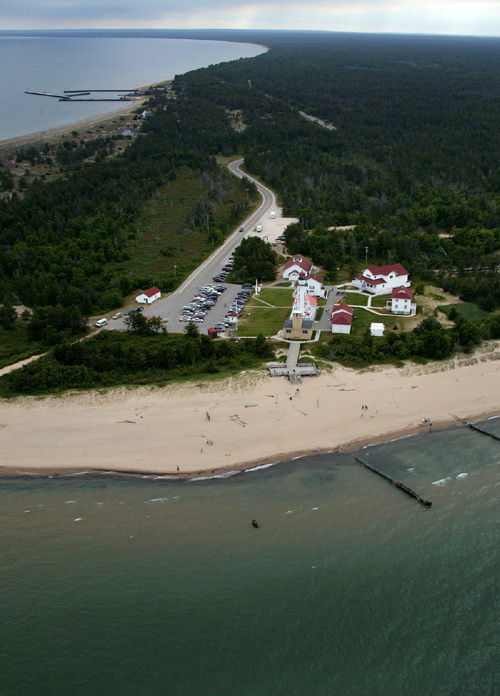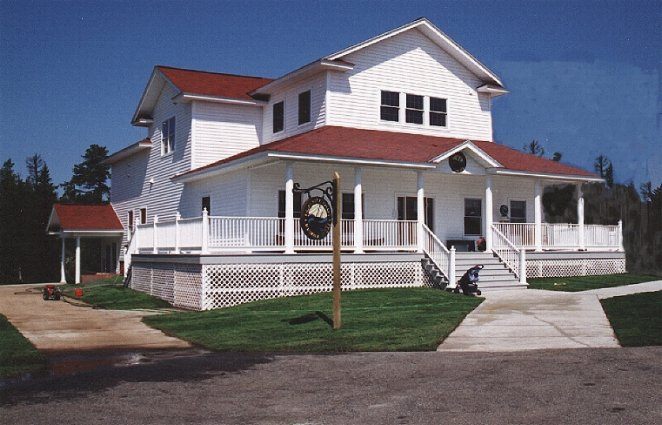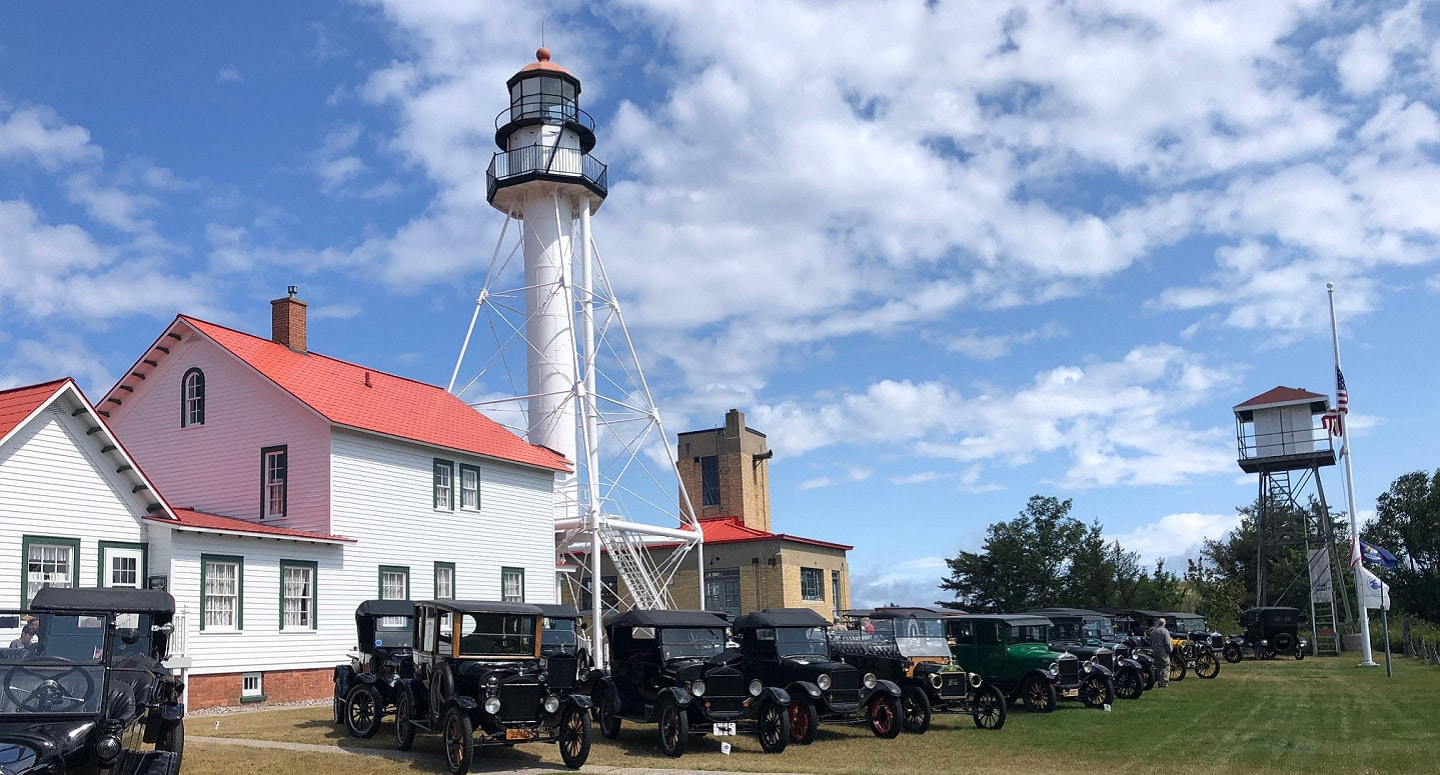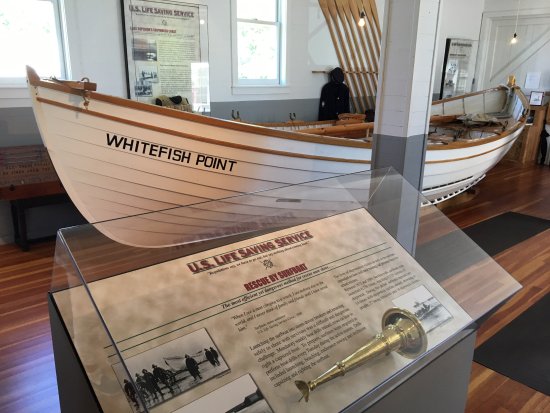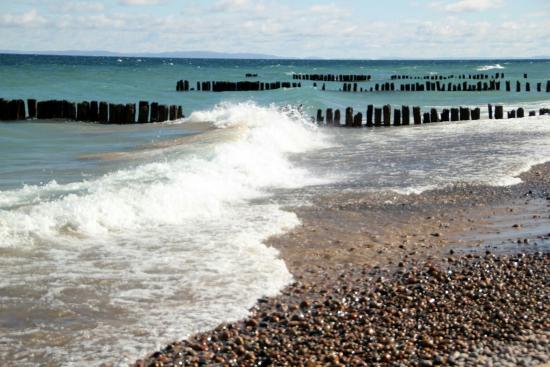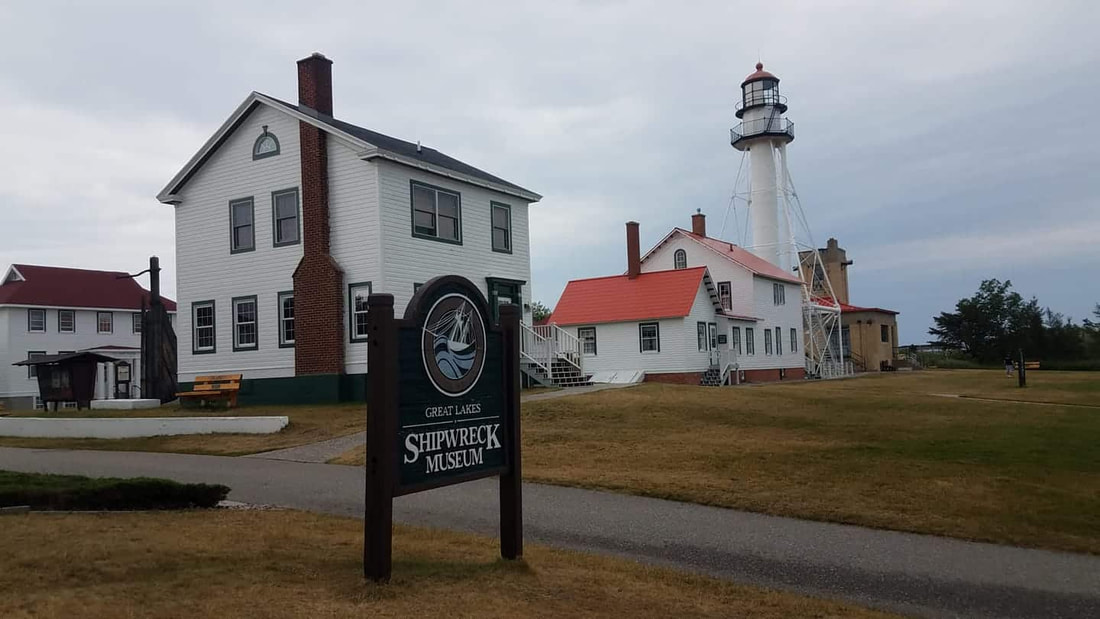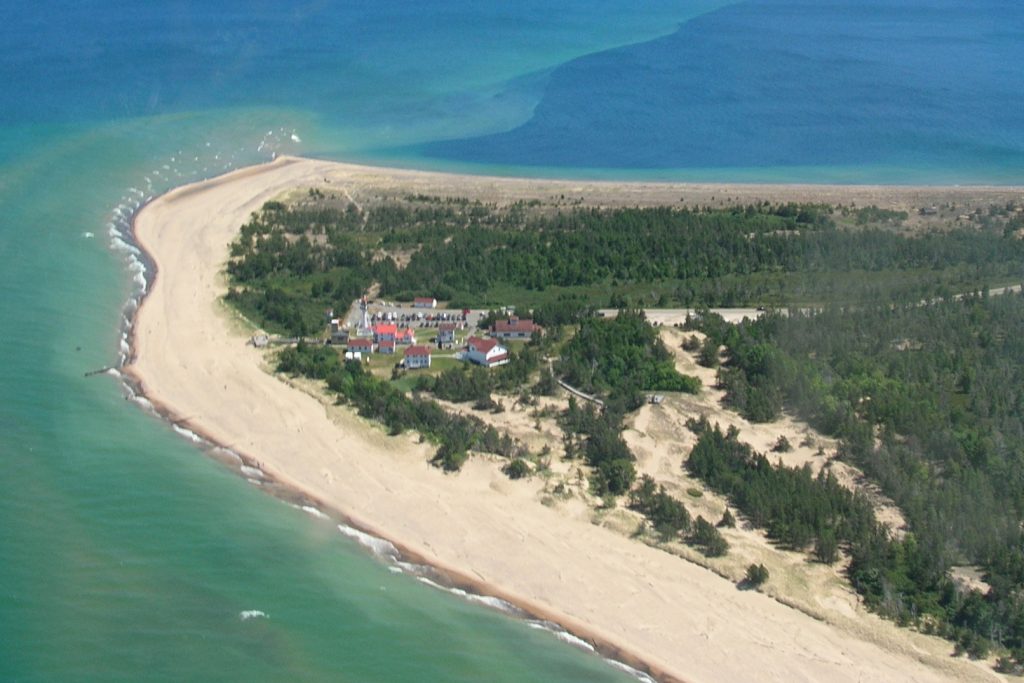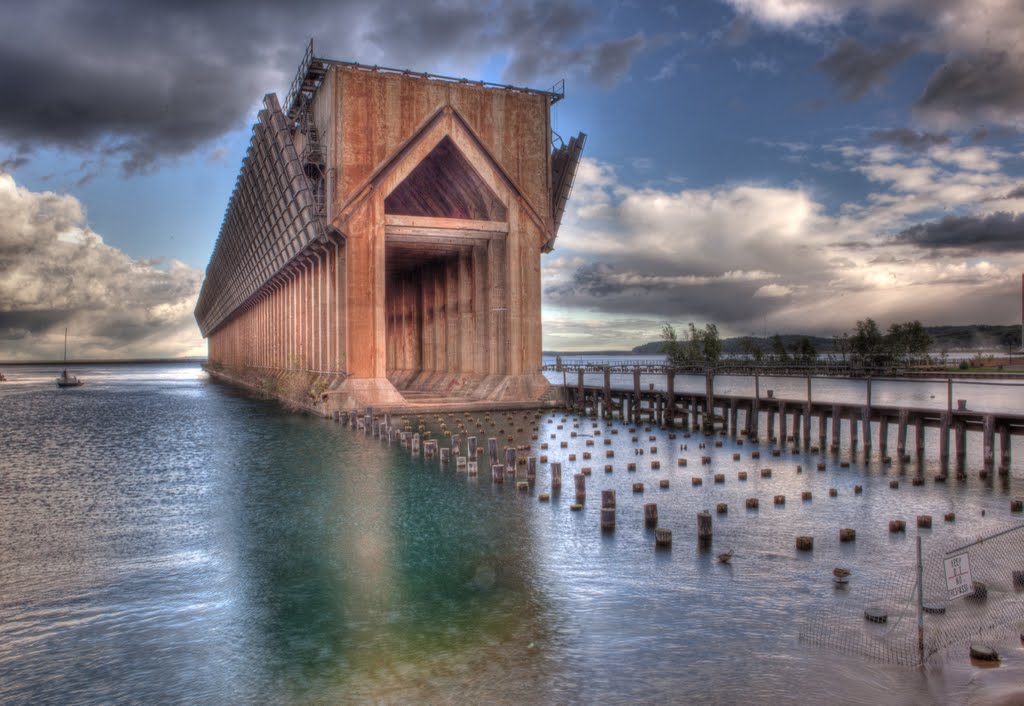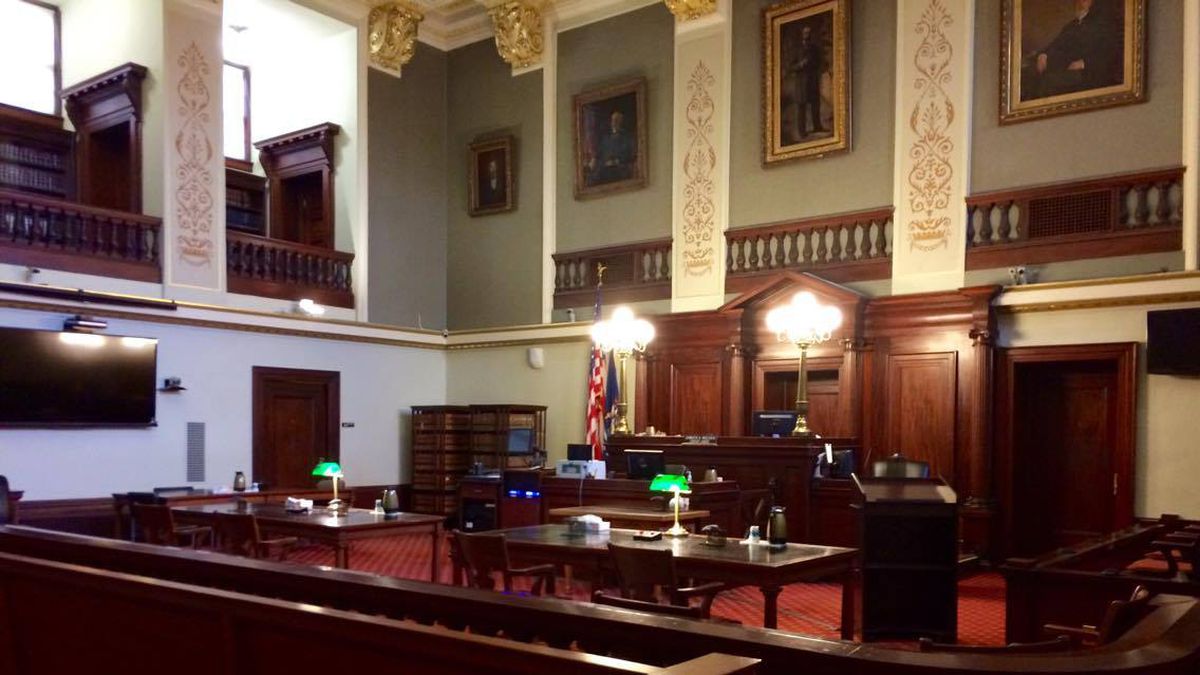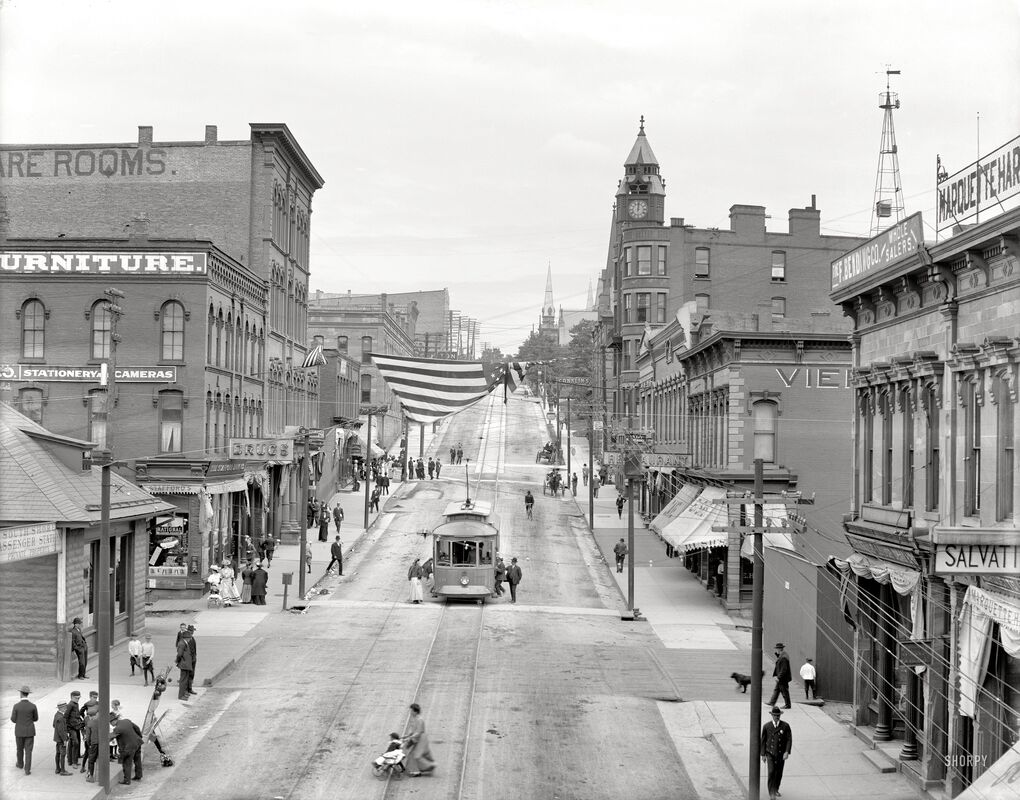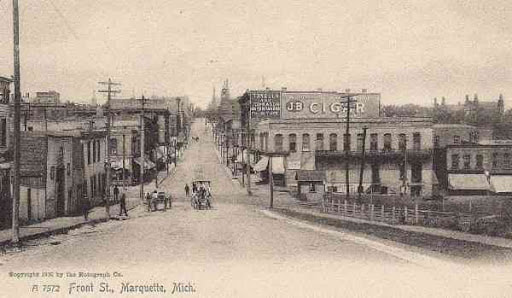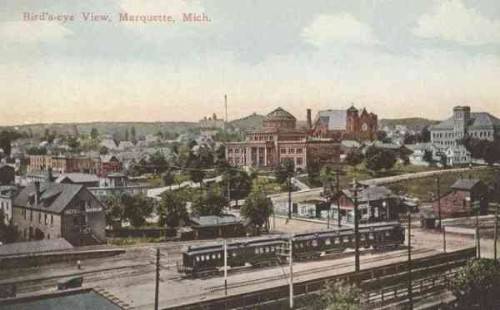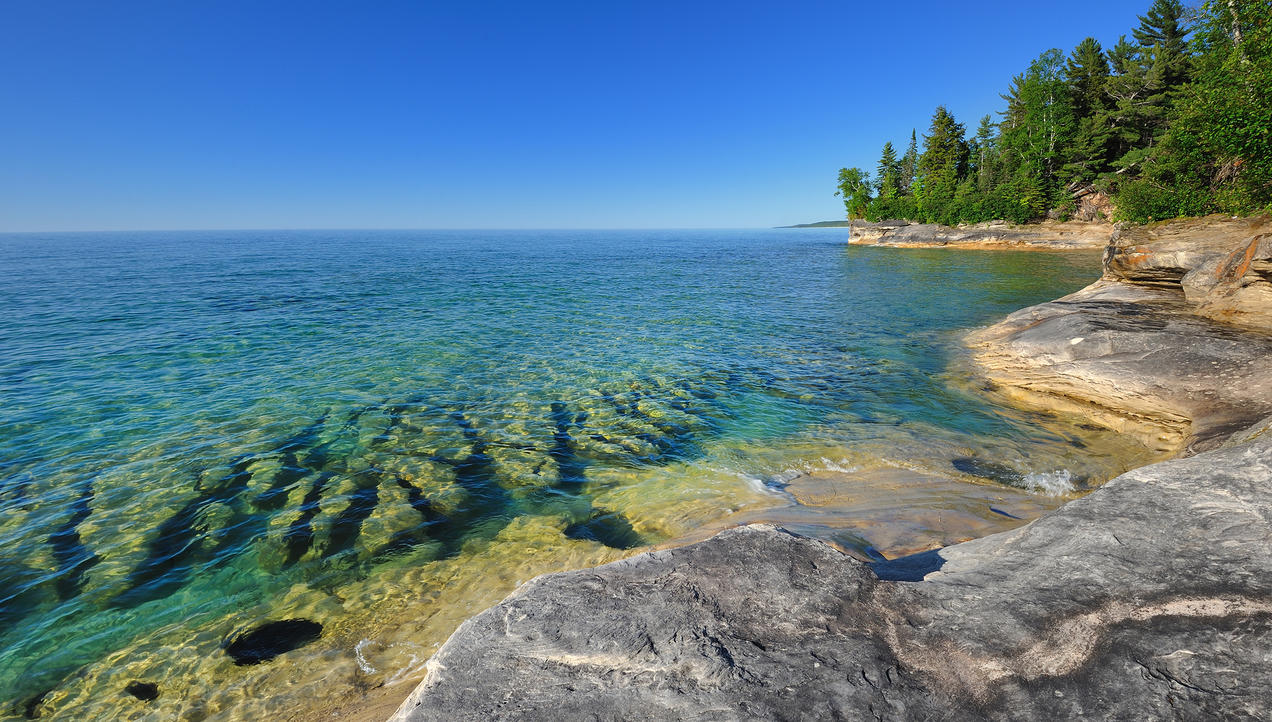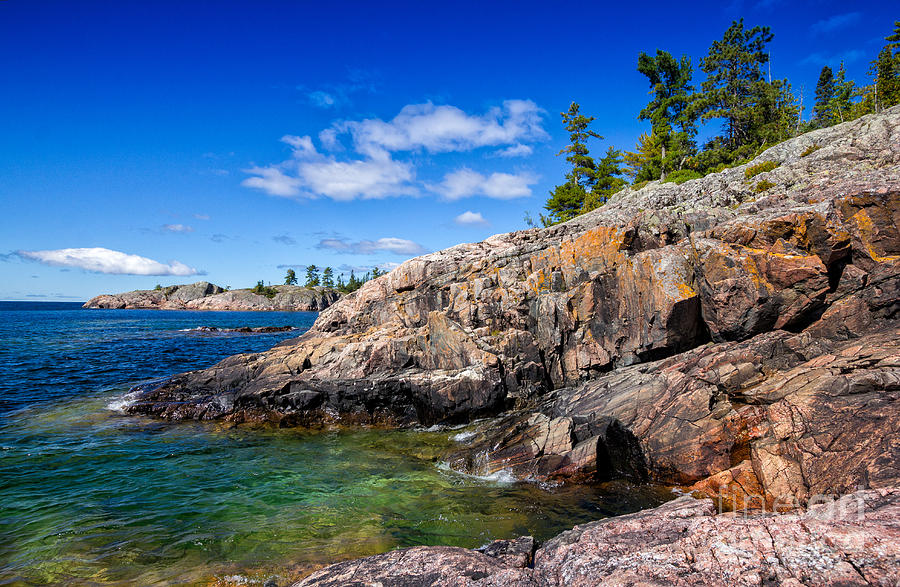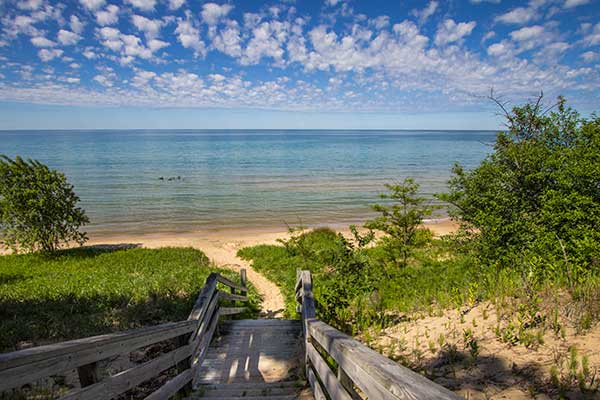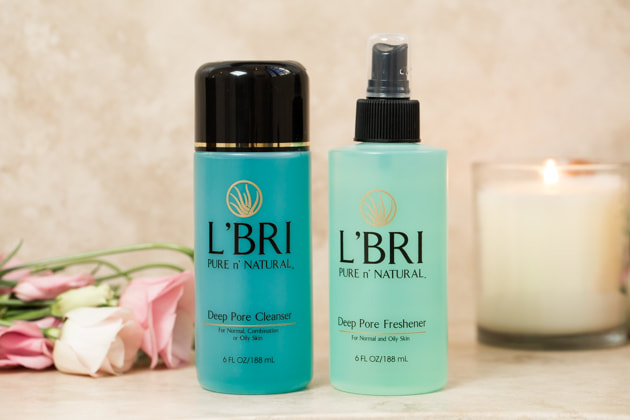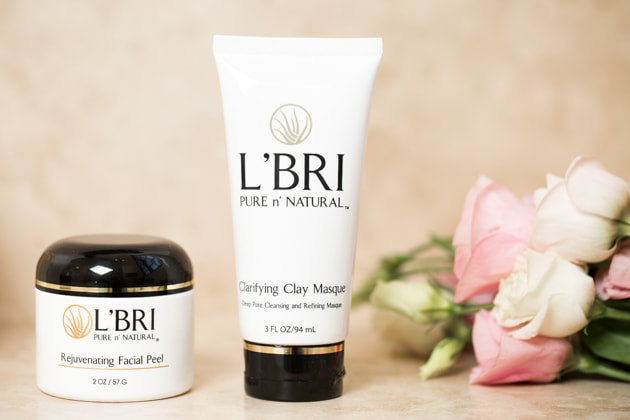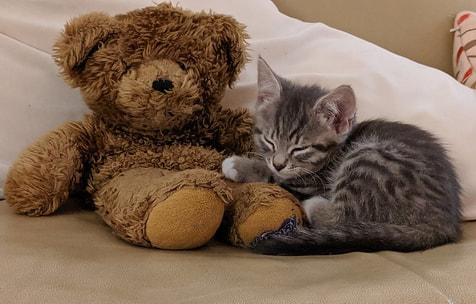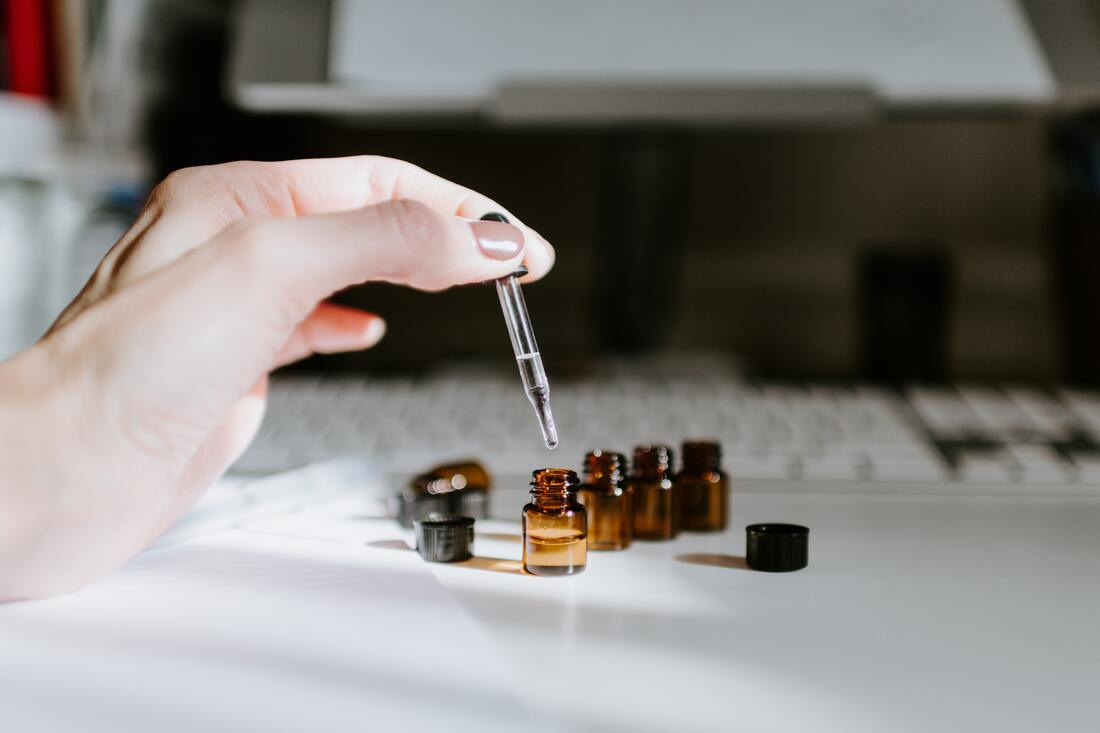|
From the summit of 1,327-foot Marquette Mountain in northern Michigan, the view offers a pleasing mix of industrial brawn and natural beauty. Dense pine forests descend to the red sandstone churches and office buildings of Marquette, the largest town (pop. 20,714) in the Upper Peninsula, or UP. In Marquette’s harbor on Lake Superior, the world’s largest body of fresh water, a massive elevated ore dock disgorges thousands of tons of iron pellets into the hold of a 1,000-foot-long ship. Closer to my lofty perch, a bald eagle plunges toward unseen prey in the lake’s blue waters. For more than a century, the UP has been the summer playground of Midwesterners. From the early 1900s on, captains of industry and commerce—including Henry Ford and Louis G. Kaufman—converged here. The industrialists erected lavish lakeside “cabins” that rivaled the Adirondack “camps” of the Eastern Seaboard elite. By the American automobile’s mid-20th-century heyday, Detroit assembly-line workers were flocking here as well. With Lake Superior to the north, Lake Michigan to the south and Lake Huron to the east, the UP covers 16,542 square miles, or about 28 percent of Michigan’s landmass. (Since 1957, the two peninsulas, Upper and Lower, have been connected by the five-mile-long Mackinac suspension bridge.) Yet only about 3 percent of the state’s population—some 317,000 residents—live amid the UP’s woodlands, waterfalls and icy trout streams. Ernest Hemingway, who fished in the UP as a boy and young man, paid homage to the region in a 1925 Nick Adams short story, “Big Two-Hearted River,” set there. “He stepped into the stream,” the novelist wrote. “His trousers clung tight to his legs. His shoes felt the gravel. The water was a rising cold shock.” “Yoopers,” as local residents call themselves, scoff at warm-weather visitors; as much as 160 inches of snow falls annually in parts of the UP. Even in July and August, when daylight stretches past 10 p.m., Lake Superior breezes keep average temperatures below 80 degrees. By nightfall, lakeside restaurants are packed with patrons tucking into grilled whitefish and pasties (pronounced PASS-tees)—turnovers stuffed with beef, potato and onion, a regional specialty introduced more than 150 years ago by British miners from Cornwall. I confined my nine-day journey to a scenic stretch along Lake Superior, between the heavily transited ship locks in Sault Ste. Marie (pronounced SOO Saint Ma-REE, pop. 16,542) on the east and the lonely crescent beaches of the Keweenaw Peninsula, 263 miles to the west. Looming on the horizon at nearly every turn was Lake Superior, considered an inland sea despite its fresh water—so big it holds more water than the other four Great Lakes combined. The Ojibwa tribe called it “Gichigami,” meaning “big water,” and it was memorialized in Henry Wadsworth Longfellow’s epic poem, “The Song of Hiawatha”: “By the shores of Gitche Gumee / By the shining Big-Sea-Water...” French Explorers came to the Upper Peninsula in the 1600s for pelts, particularly beaver; they used Huron and Odawa Indians as go-betweens with trappers from other tribes. “The fur trade led Native Americans to give up their traditional way of life and plug into the global economy,” says historian Russ Magnaghi of Northern Michigan University in Marquette. The tribes also revealed locations of copper and iron deposits. By the 1840s, metal ore revenues surpassed those from fur, attracting miners from Germany, Ireland, Britain, Poland, Italy, Sweden, Norway and Finland. At first, ore moved by boat on Lake Superior to Sault Ste. Marie, then was unloaded and carried overland by horse-drawn wagons past the St. Mary’s River rapids, a distance of some 1.5 miles. Then the ore was once again loaded onto waiting ships—a “staggeringly slow and inefficient” process, says Northern Michigan University historian Frederick Stonehouse. But in 1853, construction began on locks to allow the ships direct passage between Superior and Huron. Sault Ste. Marie’s Soo Locks opened on schedule in 1855. “The lakes themselves became a vital highway for the Union Army in the Civil War,” says Stonehouse. In the year before the locks opened, fewer than 1,500 tons of ore were shipped; a decade later, the annual total had increased to 236,000 tons. After the war, the ore was shipped to the iron mills of Ohio and Pennsylvania. “The economic impact of Soo Locks was felt throughout the Middle West and across the nation,” says Pat Labadie, a historian at Thunder Bay National Marine Sanctuary on the shores of Lake Huron at Alpena, Michigan. Today, nearly 80 million tons of cargo pass through the Soo Locks each year, making it the third busiest man-made waterway after the Panama and Suez canals. Even the mightiest feats of engineering, however, are no match for the sudden storms that lash Lake Superior. The Shipwreck Museum at Whitefish Point, a 75-mile drive northwest from Sault Ste. Marie, documents the final 1975 voyage of the doomed ore carrier the SS Edmund Fitzgerald, in its day the largest and fastest vessel on the lake. On November 9, the 729-foot ship and its 29-man crew departed from the port of Superior, Wisconsin. Fully loaded with 29,000 tons of taconite iron-ore pellets, the Fitzgerald headed in calm seas for the Great Lakes Steel Company near Detroit. Some 28 hours later, the worst storm in more than three decades—waves 30 feet high and wind gusts close to 100 miles per hour—swept over Lake Superior. The Whitefish Point lighthouse was out as the vessel approached. “We have not far to go,” the Fitzgerald’s captain, Ernest McSorley, said on the radio. “We will soon have it made. Yes, we will....It’s a hell of a night for the Whitefish beacon not to be operating.” “It sure is,” replied Bernie Cooper, captain of the nearby Arthur M. Anderson, another ore carrier. “By the way, how are you making out with your problems?” “We are holding our own,” McSorley answered. Those were the last words heard from the Fitzgerald. On November 15, 1975, the ship’s twisted remains, broken into two large sections, were located 17 miles off Whitefish Point at a depth of 530 feet. No one knows just what happened. One theory holds that the force of the waves opened the vessel’s hatches and filled the hold with water. But historian Stonehouse, author of The Wreck of the Edmund Fitzgerald, believes the ship probably “struck a rocky shoal, didn’t realize it, staggered off and sunk in deep water.” Because of the danger in sending divers into water that deep, the crew’s bodies have yet to be brought to the surface. Tahquamenon Falls State Park lies 23 miles southwest of Whitefish Point. It’s the site of two cascades that disgorge up to 50,000 gallons of water per second, putting them behind only Niagara in volume among waterfalls east of the Mississippi. The Upper Falls, surrounded by one of Michigan’s last remaining old-growth forests, features a 50-foot drop. The falls might have saved the forests by making logging there untenable. The drop over the falls would have broken logs floating downriver. Today, majestic eastern hemlocks, four centuries old, stand 80 feet high in the 1,200-acre park. The movement of glaciers shaped Lake Superior 10,000 years ago. Today, wind and water continue to mold its shoreline. Nowhere is this more dramatic than at Pictured Rocks, a 15-mile-long expanse of cliffs northeast of the small port of Munising (pop. 2,539). I board a tour boat that makes its way into a narrow bay created by Grand Island on the west and the lakeshore to the east. As we head toward the open lake, the cliffs become less densely forested; fierce winds have sheared off treetops and branches. Some cliffs are shaped like ship hulls jutting into Superior, and crashing waves have carved caverns into others. After a few minutes, the Pictured Rocks come into view, looking like giant, freshly painted abstract works of art. “There are a few cliff formations elsewhere along Superior, but nothing this size or with these colors,” says Gregg Bruff, who conducts education programs at Pictured Rocks National Lakeshore. Hundreds of large and small waterfalls and springs splash down the cliffs, reacting with minerals in the sandstone to create a palette of colors, including browns and reds from iron, blues and greens from copper, and black from manganese. The fragility of this natural wonder is apparent: large fragments from recently collapsed cliffs lie at the base of rock faces. In some places, the cliffs may retreat several feet in a single year. Eaten away by pounding waves, the lower portions are the first to go. “On top, there will be overhangs protruding above the water,” says Bruff. “Right now, there is one spot with an overhanging boulder the size of a four-bedroom house.” As we head back to the harbor, flocks of hungry gulls emerge from nesting holes in the cliffs, flying parallel to our boat. Some 150 miles west, on the northwest shore of the scenic Keweenaw (KEE-wuh-naw) Peninsula, 1,328-foot Brockway Mountain offers a breathtaking prospect of Lake Superior. This is copper mining country. At Keweenaw’s tip, the tiny hamlet of Copper Harbor is Michigan’s northernmost point. During the Civil War, the port was a major loading dock for copper ore. In the century that followed, the peninsula drew vacationing families to holiday houses, many along the southeastern coast of Keweenaw Bay. Some of the beaches were created from massive amounts of gravel and sand excavated during removal of copper ore from underground mines. Established in 1848 midway up the Keweenaw Peninsula, the Quincy mine grew into one of the largest and most profitable underground copper mines in the country, earning the nickname Old Reliable—until its lodes declined in purity in the early 1940s. By then, Quincy’s main shaft had reached a depth of 6,400 feet—well over a mile. Today, guided tours transport visitors on a cart pulled by tractor to a depth of only 370 feet. Below, the mine has filled with water. Tour guide Jordan Huffman describes the work routine in the mine’s heyday. “You had a three-man team, with one man holding a steel rod and two men pounding away at it with sledgehammers,” says Huffman. After each blow, the miner grasping the rod rotated it 90 degrees. At the end of a ten-hour workday, four holes would have been driven into the rock. Sixteen holes filled with dynamite formed a blast pattern that loosened a chunk of copper ore to be transported to the surface. The backbreaking work was done by the light of a single candle. With a twinge of guilt, I return to my comfortable lodgings, the Laurium Manor Inn, a restored Victorian mansion that once belonged to mine owner Thomas H. Hoatson Jr. From my balcony I can see small-town Americana. Girls play hopscotch on the sidewalk. Young men hunch over the open hood of a Chevy Camaro, scrub the tires and wax the exterior. A songbird chorus rises from the stately oaks, hemlocks and maples shading large houses, many dating back more than a century. David and Julie Sprenger graduated from the UP’s Michigan Tech, in the town of Houghton. They abandoned careers in Silicon Valley in 1991 to transform this once-derelict mansion into an upscale bed-and-breakfast in tiny Laurium (pop. 2,126), about ten miles northeast of the Quincy mine. “We gave ourselves two years to get it up and running—and then we just couldn’t stop,” says Julie. Work on the stained glass, reupholstered furniture, carpentry, original plumbing and lighting fixtures has stretched out for 20 years. “And we still aren’t through,” she says. Some 100 miles to the east, the town of Marquette offers a remarkable inventory of historical architecture, linked to another 19th-century mining boom—in iron ore. The single most striking structure is the now abandoned Lower Harbor Ore Dock, jutting 969 feet into Lake Superior from downtown Marquette. The Presque Isle Harbor Dock, at the town’s northern end, remains in operation. Here, loads of iron pellets are transferred from ore trains to cargo vessels. From about 1870, iron-mining wealth funded many handsome buildings built of locally quarried red sandstone. Landmarks include the neo-Gothic First United Methodist Church (1873), with square buttressed towers and two asymmetrical spires; the Beaux-Arts-style Peter White Public Library (1904), constructed of white Bedford (Indiana) limestone; and the former First National Bank and Trust Company headquarters (1927), built by Louis G. Kaufman. The Marquette County Courthouse, built in 1904, is where many of the scenes in the 1959 courthouse cliffhanger, Anatomy of a Murder, were filmed. The movie, starring James Stewart, Lee Remick and Ben Gazzara, was adapted from the 1958 novel of the same title by Robert Traver, the pseudonym of John Voelker, who was the defense attorney in the rape and vengeance murder case on which the book was based. “After watching an endless succession of courtroom melodramas that have more or less transgressed the bounds of human reason and the rules of advocacy,” wrote New York Times movie critic Bosley Crowther, “it is cheering and fascinating to see one that hews magnificently to a line of dramatic but reasonable behavior and proper procedure in a court.” On my final day in the upper peninsula, I drive 58 miles from Marquette to the village of Alberta, built in the 1930s by Henry Ford, who conceived of a utopian community for his workers. In 1935, he founded such a settlement, centered around a lumber mill, at the southern end of the Keweenaw Peninsula. There the men worked in a mill that supplied lumber for components for Detroit car bodies; Alberta’s women grew fruits and vegetables on two-acre plots. The community included a dozen households, two schools and a reservoir that supplied water to the mill and offered recreation for residents. Ford claimed he had been motivated to create Alberta—named after the daughter of one of his executives—by nostalgic memories of his own village childhood. But some are skeptical. The Depression years were a time of ideological struggle, with Fascism and Communism sweeping Europe and increasing tensions between management and labor in the United States. “Ford didn’t like unions, and saw the Alberta experiment as an alternative to keep them at bay a bit longer,” says Kari Price, who oversees the museum established at Alberta after the Ford Motor Company transferred the village to nearby Michigan Tech in 1954. Today Alberta is the location of the university’s forestry research center, and its original dozen Cape Cod-style cottages are rented to vacationers and a handful of permanent residents. The Alberta experiment lasted only 16 years. Demand for automobile lumber ended in 1951 when Ford stopped producing “woody” station wagons, which featured slats of polished wood on the doors. And farming at Alberta turned out to be impractical: the soil was rocky, sandy and acidic; the growing season was short (90 days at best)—and the deer were voracious. Ford’s failure, however, was not without its compensations. He envisioned establishing villages throughout the Upper Peninsula, and likely anticipated increased logging to supply the mills in future settlements. Instead, the region’s sprawling wilderness has remained intact. In the late 1950s, when the celebrated American naturalist and writer Edwin Way Teale crisscrossed the Upper Peninsula—as part of an odyssey he would recount in Journey Into Summer (1960)—he was awed by the region’s untrammeled beauty. The UP, he declared, could fairly be described as a “land of wonderful wilderness,” where “sand and pebbles and driftwood” dot the lakeshores, mayflies can be seen “rising and drifting like thistledown,” and forest glens are “filled with the hum of bees and the pink of milkweed flower clusters.” Teale wrote that he and his wife, Nellie, were reluctant even to glance at their map while driving for fear of missing a sight, whether small or spectacular: “Everywhere we felt far away from cities and twentieth-century civilization.” More than a half-century later, that assessment holds true. If you need to look at a map, it’s probably best to pull over.
0 Comments
11/7/2020 0 Comments Gluten-free pumpkin sconesThese soft and tender Gluten-Free Pumpkin Scones are vegan, allergy-free, perfectly spiced with fall flavors, lightly topped with icing, and a maple pumpkin spice drizzle! These easy homemade scones are a healthy Starbucks copycat recipe that’s packed with real pumpkin and perfect for breakfast or dessert right at home!I’ve never been a scone woman, but when it reaches to pumpkin season, any baked good with the orange quash gets my seal of recommendation. For all the pumpkin lovers out there, I bet you’ve had (or at least have read) about Starbucks famous pumpkin scones. Since they’re not gluten-free, vegan, or allergy-friendly in the meagerest, we might as well take the reputation of the Starbucks pumpkin scone and make it homemade, free-from, and healthier so we can all enjoy a bite of this autumn breakfast treat! Ingredients for perfect pumpkin scones Scones always seem intimidating, but after making this recipe, I think you’ll feel like me and find them super easy to make and a go-to for your breakfast repertoire! gluten-free scone dough: Gluten-Free All-Purpose Flour Brown Rice Flour Baking Powder Baking Soda Light Brown Sugar Sweetener Cinnamon, Ginger, Nutmeg, Cloves (or Pumpkin Pie Spice) Maple or Vanilla Extract Pure Pumpkin Puree Vegan Butter the icing: Powdered Sugar Sweetener Unsweetened Non-Dairy Milk the pumpkin drizzle:
 mixing & shaping the scone doughThis seems to be the most intimidating part, but it’s actually super simple and easy!
 icing & drizzling the sconesThis is the fun and (most “difficult”) part! It’s not too difficult, once you get your “drizzle flow” on, it becomes super quick and easy!
baking tips & tricks
storage and freezingIt’s best to serve your scones right after baking them, warm from the oven with a simple icing and drizzle. However, to store baked scones, keep them in an airtight container at room temperature, like any muffin, for 2-3 days. You can keep them in the fridge too, but bring them to room temperature before serving. To freeze the scones, bake and store in a Ziplock bag for 4-6 months. Thaw in the fridge before icing them and warming to serve. perfect for breakfast, brunch, or dessertNo need to travel to Starbucks for your scone and coffee now! A perfect slow and cozy autumn weekend baking project that you can enjoy with the family for a late breakfast or brunch, even dessert! These pumpkin scones are:
While the outset of Fall measures back to school and work, it’s still a splendid time to start afresh with health and beauty routines. The hot and steamy Texas Summer 2 weeks wreaked havoc on my skin, so when L’BRI Pure n’ Natural stood out and challenged me to try out their products, my answer was an electrifying yes! If you are a regular reader of this blog, you doubtless already appreciate how essential natural products are to me, and now I’m excited to share with you how I’m protecting my skin glow for Fall with L’BRI. L’BRI Pure n’ Natural’s principal ingredient is aloe vera, which is at the core of this line whose target is beautifully healthy and nourished skin. The pretty cold and crisp Fall air can be refreshing but generally dulls and dries our skin. The healing power of aloe is a crucial element for hydration. L’BRI’s primary skincare set up consists of a three-step regimen, a cleanser, freshener, and moisturizer. With aloe vera at the core, these products work collectively to clean, protect, and moisturize. My skin maintains to be oily and susceptible to breakouts, so I was ambitious to try L’BRI’s Clarifying Clay Masque and Rejuvenating Facial Peel. I catch my skin feeling less congested after my initial day, and by day I noticed a HUGE difference. L’BRI Pure n’ Natural has a complete program of products for changing skin types and maps out a unique regimen for each class with their skin quiz. If you require help in choosing the best products for your kind, contact me for a consultation. In an extension of leaving my skin hydrated and glowing, I must point out that this aloe-based line also smells fantastic and fresh! I’m again loving L’BRI’s Time Erase which supports scale down the size of pores, fade age spots and reduces fine lines around the eyes and lips. L’BRI Pure n’ Natural offers free samples curated for your skin type. Message me for more details and see and feel the difference for yourself! L’BRI Pure n’ Natural is 100% cruelty free and naturally obtained, utilizing no animal products whatsoever. Aloe vera, botanicals, vitamins and natural ingredients are key to protecting my skin glowing for Fall with L’BRI. Thank you so much for reading! xoxo, Reanna 4/2/2020 0 Comments For a limited time, I’m offering an unlimited Life Coaching Via Email for Only $25/month
As a buyer, I have benefited from email coaching a few various stages in my life. I’d love to use this blog pointing out why I personally employ email coaching as effectively as some of the conceivable advances of email coaching.
When I first started into the coaching system, I was yet handling with some leftover moods, emotions, and battles from my early trauma events. Many times, the nature of my anxiousness revealed itself was that I was just incapable to get on the phone (or video) with a coach that I had paid lots of money to. So when the moment for our anticipated appointments would occur, I would either initiate an emergency or I would just blow them off. It wasn’t one of my loveliest moments but I was actually going on the best I could. For so long, email coaching was such an excellent fit for me. Until my world changed and I had the time and the capacity, being on the phone/video with a coach, email coaching was sincerely the strongest preference for me. I again discovered that it supported me to develop the value I picked up out of the coaching session. I lead an active lifestyle, where I’m continually doing tasks and flying from appointment to appointment. It can be pretty discouraging to not have the goals reached that I brought with me to a coaching session. With email coaching, I can make sure that all of my goals become dealt with. It still excludes the (at times) awkward chit chat that I encounter with in some personalities. I’m not by any stretch of the imagination assuming that every character would either advance or be applicable for email coaching. But for some characters in the world, email coaching is unquestionably the excellent fit. Benefits of Email Life and Recovery Coaching
Other people send a few emails throughout the day, as reflections arise to them or as issues come up. Many clients truly value that they get to go at their own pace in email coaching. They value not being put on the spot to produce an answer, and instead having some time to process the questions.
And later hours (or frequently even days) thereafter, the exact return appears to you. However, many times effectively suggests to be no point in continuing back and resolving. And alike if you do, the other person has moved on. One of the many advances to email coaching, is that it offers you time to refine and build your reply.
Many of my coaching clients are professionals, parents, caretakers, etc. They hardly have time many days to shower, cook, eat, and wash up after themselves. That doesn’t even appear to recount the demands of starting a relation with separate lives, meditating, exercising, journaling. We lead in a hectic and fast paced world and email coaching is a wonderful fit for people who crave to dig deep.
Many clients disclose that they completely value being prepared to study the conversations that took place. I consider this is exclusively relevant when you are carrying out through some tremendous issues. Occasionally when people are writing, they get in the “flow” and they are not fixated on every detail with their conscious mind. Some individuals just reveal themselves further distinctly in writing than they do verbally.
While I have never counted on or required people to mortgage their own homes or go into enormous debt to work with me, I know that conventional life coaching is nevertheless not affordable for everybody. The cost of email coaching is consistently quite less, with much more convenience to the coach involved. Consistently, instead of a per session rate, you have a predetermined agreement with much more access via email.
Obtaining the freedom to react, in your own time, or not answer, as you see fit receives a massive output of pressure off of you. Many of the coaching clients I work with talk about how much aid they gain from our email communication.
Normally $300 a month for unlimited emails, Now only $25 a month. Limited spots Available for a very Limited time! Sign up now and get this offer for 6 months!
After purchase please email me at mywhwcemail@gmail.com to begin our Email sessions Click on this Link Today to Start your Monthly Subscription!3/2/2020 0 Comments Common Sleep Problems in TeensEveryone has trouble sleeping from time to time, but if your teen is struggling with sleep issues, it’s best to deal with them sooner rather than later. How Much Sleep Does a Teen Need? Teens are still growing, so they need more sleep than an adult. Nine to ten hours, and up to eleven hours, will be the norm. However, various lifestyle and other issues mean that teens seldom get as much sleep as they really need in order to maintain optimal health. Teen Sleep Stealers One of the main reasons teens don’t get enough sleep are the many aspects of their lives that get in the way of sleep, and/or require them to need high-quality, rejuvenating sleep - which can be difficult if they have sleep issues. Common sleep stealers include: * Too much schoolwork and studying * Too much screen time on computers, smartphones, and other devices * Too much game time * Too much time on the phone talking or texting friends * General stress * Particular stressors, such as exams, bullying, relationship issues, worrying about getting into particular colleges, and so on * Too many extracurricular activities, especially sports * Too much TV / overly stimulating movies such as horror films or action films, especially before bed * Media in the bedroom, such as a TV/DVD or streaming on a smartphone or tablet * Too much exercise within a couple of hours of bedtime - it serves to energize the body The Consequences of Poor Sleep There a number of consequences related to poor sleep, some more severe than others. A lack of sleep can cause: * Accidents and injuries * Behavioral problems * Mood disorders, such as stress, irritability, depression and anxiety * Memory, concentration, and learning problems, often described as a "brain fog" * Slower reaction times, such as when playing sports, or when adults are driving * Overeating, binge eating * Gaining weight, mainly due to the lack of sleep affecting the hormones that impact metabolism and weight loss How Parents Can Help It can be tough with teens, because they want to be independent and often view themselves as adults. They also often have erratic schedules, especially once they get to high school, where they might have free periods and varying start times in school. However, here are some ways you can help. 1. Establish a regular bedtime for yourself each night, in order to set a good example for your teen. 2. Establish a regular wake-up time seven days a week for everyone in the family. 3. Make time for a proper breakfast that includes protein. It will set everyone up for the day and help reduce food cravings and bad food choices. 4. Cut back on caffeine. Teens don’t drink much coffee and tea these days to get a caffeine buzz, but they do go for Red Bull, Monster and other energy drinks. Cutting caffeine can lead to withdrawal symptoms such as headache, but can also improve quality of sleep long term. 5. Try to have a sit-down dinner as a family at least three nights a week. Both parents and teens have crazy schedules, but a sit-down dinner is a great chance to connect with one another and also helps signal the end of the work and school day. 6. Encourage your teen to have a relaxing bedtime routine, such as a shower, comfortable sweats, and some light reading. 7. Do not allow electronics in their bedroom.
There are a lot of guys out there that have seen television shows and movies that have one of those dating guru type guys promising to get you any woman you ever wanted to fall madly in love with you. There are also websites that you’ve probably seen along with eBooks all over the internet that promise you the same things as well. While these “guru’s” are making quite a lot of money with their promises, what they aren’t telling you is that it’s all a scam. They want you to give them their hard earned money so that they can go out and buy things while you sit at home reading their information. For the most part, these guys promise you the world but very rarely ever deliver. In fact, if you actually look at what they are trying to sell you, you will find that all you have to do is go out and act like a jackass, and you will get laid every night of the week. The truth is, any woman that would fall for any guy that acts that way deserves the relationship she ends up with. If you want to have a real relationship, then you are going to have to be yourself. Being yourself is one of the hardest and most important things that you can do in order to gain the trust that a relationship is based on. If you go into the beginning of a relationship with her thinking you are some flashy rich guy, and it turns out that you drive a Pinto and live in your mother’s basement, when she finds out you can pretty much kiss any chance of being with her again goodbye. Women don’t want to be lied to, even if it’s something small, and starting a relationship out this way will cause it to end very quickly. All those gurus want you to ACT like you are confident when the truth is you should BE confident. There is no reason for you to act like you are confident it you really aren’t. The woman you are interested in is going to know right away if you have the confidence to be with her or not. Think of it as eating fast food your entire life and suddenly finding yourself in a 5 start French restaurant, ordering wine in French. The waiter is going to know that you aren’t from France, and she is going to know you aren’t confident. The best thing to do is be truthful and honest with her. Tell her that you don’t have the money to go out to a fancy restaurant, then turn around and make a romantic picnic out of things you can afford. Do something small but elegant to show her who you are on the inside and you will find that it will impress her much more than trying to pull off the bad boy routine that you just paid $29.95 for online. The choice is yours, but making it the right choice is what she deserves from you.
In this guide, the Dating and Relationships content discussed focuses on traditional male/female relationships. For supplemental material and resources with regards to significant others in same gender relationships, simply key in words or phrases pertaining to the information you seek into your favorite search engine directory.
Essential oils are great to have on hand. They can be used for a variety of purposes. Here is a list of the ones you will want to have around, and what they can be used for. 1. Lavender oil is one of the most popular essential oils. It can be used to help you sleep better, and give you fast relief when you have a sunburn. 2. Tea tree oil is great to have on hand for adding to vinegar and using the mixture to clean your home. It is antiviral, anti-fungal, antiseptic and antibiotic. 3. Chamomile oil is great for relaxation. Roman chamomile is more gentle than German chamomile, so it can be used for young babies, and is often used in homemade diaper spray solutions to soothe diaper rash. 4. Eucalyptus oil helps support respiratory health. Those suffering from asthma, bronchitis and even the common cold can benefit from diffusing this or applying it topically in diluted form. 5. Lemon oil is a great antibacterial and anti-fungal oil. If you are coming down with a cold, rub it in the palms of your hands and inhale. You can even add several drops to your load of laundry to help disinfect it. 6. Frankincense oil is great for the skin, and often used in homemade facial creams. It can be applied topically to swollen areas and used as an anti-inflammatory. 7. Peppermint oil can soothe sore muscles and relieve bad breath. It can also be sprinkled around the doors in your home to deter ants from entering. 8. Clove oil has antiseptic properties and can be used to relieve tooth pain while you are waiting for an emergency dentist appointment. 9. Grapefruit oil is a detoxifier and can be diluted and applied to cellulite-laden areas of the body to help release toxins from fat cells. 10. Ginger oil helps relieve nausea. It can also be diluted and applied to painful areas in order to experience relief. 11. Ylang ylang oil has a beautiful smell and is often used as a natural perfume. It also benefits relaxation and healthy skin. 12. Cedarwood oil can be used to clarify the skin and is a repellent for ticks, flies and gnats. 13. Citronella oil is a well-known mosquito repellent, but can also treat fevers and headaches. 14. Lemongrass oil is a common insect repellent, and can also help with digestive issues. 15. Geranium oil is great for the skin and also helps balance hormones. 16. Orange oil helps circulation and can also be used when cleaning your home, as it is not harsh and damaging to surfaces. 17. Lime oil is beneficial to diffuse when you need to stay alert. It can be added to shampoo to prevent scalp issues such as lice. 18. Rosemary oil has become the go-to oil for hair growth, by adding it to a carrier oil and applying it to the scalp. 19. Myrrh oil is great for skin health and also fights and protects against parasites when ingested. 20. Thyme oil is used for respiratory health and is antibacterial, which makes it great for use when fighting illness or cleaning the kitchen. If you could only purchase twenty essential oils, these would be the ones you should invest in. They promote health, cleanliness and work together to cover a great variety of everyday needs. Start with a few, and build your collection as you find yourself using them more and more. Essential oils have been getting quite popular in recent years, but they have actually been around for thousands of years. In the past, people used essential oils for many reasons, from spiritual purposes to medication. Essential oils have a wide range of uses, and here is a little bit of information about the oils that have come to be known as nature’s pharmacy. What Are They? Essential oils are natural oils that are extracted from a plant or other source, and which retain the scent of the plant they come from. They are generally distilled. Essential oils are used for a wide variety of purposes, from diffusing them for their fragrance, to applying and inhaling them in order to receive health benefits. People have given anecdotal evidence of health problems that have been solved through the use of essential oils - from healing skin problems to reducing seasonal allergies and deterring insects. For many ailments, there are one or more oils that can help deal with the issue. There has been much anecdotal evidence of their benefits, as well as testing that shows them to be an effective way to deal with a myriad of issues. How Do You Apply Them? Essential oils are administered in three different ways. First, a person can inhale them aromatically. This can be done by using a diffuser and putting several drops of the particular essential oil into water, or just sniffing the oil directly from the bottle. The second way is to apply them topically. There are a few essential oils that can be applied directly to the skin, but a general rule if you are unsure is to first put a few drops into a carrier oil before applying. This can be anything from olive oil to coconut oil, as well as any other natural, pure carrier oil you have around the house. The third way to use oils is by ingesting them. Not all oils can be ingested, and one must be careful to take them in a way that is safe. If you are ingesting an oil, or even applying it topically, you must be sure to find essential oils that are pure and organic when possible. Because they are highly concentrated, a little goes a long way and they should be used sparingly. What Do People Use Them For? Essential oils are used for a variety of purposes, from maintenance of general health and well-being, to first aid and adding natural scent to homemade body products. You can use essential oils in the diffuser to help you to get to sleep or stay alert. You can use them to help calm frazzled nerves, and to give your immune system a boost when needed. The oils are useful when added to everything from DIY cleaning supplies to DIY skin products. They can be carried in your purse in order to help sanitize surfaces when out and about, and can help clean cuts and used in other minor accidents. You can use essential oils as bug repellent and to help heal sunburned skin. There is no end to the ways they can be used - alone, in combination, and when added to other bases. Essential oils are beneficial to add to your cabinet. They have many uses for a variety of purposes, and can help you out in a pinch. Start with a few, and add more as you become familiar with using them on a daily basis. “How can I love her one minute and hate her so much the next?” “I feel he’s my soul mate, so why do we constantly fight?” Sound familiar? If so, you are not alone. Most “love relationships” eventually turn into love/hate relationships. Feelings of love can turn into drama—hostility, attack, or withdrawal of affection—at the flick of a switch. This duality of pleasure and pain is considered “normal.” Many people believe that if you love the person it will all “work out.” Sadly, this is not the case. The reality is that the relationship will probably get worse. Other areas of your life will begin to be affected: you snap at your children more or fight in front of them, you withdraw from your friendships, or you are distracted at work. You’ll keep the cycle going for a while until it grows so destructive that the relationship finally collapses. You are trapped in an impossible addiction that maintains a destructive game: It makes you feel so good, and at the same time it is eating you alive. It might seem “normal,” but this is not what you want, is it? “Normal” is not an aspiration to strive for. If you want to stop the love/hate cycle you need to know why it happens and how to make changes before the relationship drives you crazy or ends. First, let’s look at why the drama begins. The path of a typical relationship: Circle what phase YOU are in. 1. You’re “in love.” You feel alive. Your life feels more meaningful—someone needs you, wants you, and makes you feel special. You feel whole. The feeling can be so intense that the rest of the world fades into insignificance. It feels as though you are healed—your pain is gone. (Although in reality it is just temporarily covered up.) 2. It feels great until your partner fails to meet your needs or expectations in some way. You develop a feeling of neediness and clinging. 3. You are addicted to the other person (or rather, to the euphoric feelings you experience due to the chemical reactions and hormones produced by your brain when you are “in love.”) He or she is like a drug. You are on a high when he or she is available, but even the possibility that they might not be there for you can lead you to feelings of fear, abandonment, and rejection. 4. The numbing quality of the drug wears off and you, again, feel the pain you had before the relationship. This time, however, you believe your partner is the cause. 5. This is when the drama begins. You both may begin to feel jealousy or resentment, and you take offense to practically everything your partner does and says. You become possessive and controlling, you withdraw, demand, criticize, judge, blame, and attack, all in attempt to coerce your partner to go back to meeting your needs. So, you begin the love/hate cycle—but, now you’re not just addicted to the love, you’re addicted to the drama cycle, too. It makes you feel alive. Research shows that relationships that are full of drama can be more addicting than most drugs How can this be true? Well, the simple answer is that when you fight your body has an adrenaline rush. This adrenaline eventually crashes and you calm down. Have you ever heard the phrase, “There is nothing like making up after a fight”? The reason the make-up period is great is because when you come down from the “high” you are usually apologetic and “loving”—so you both swing back into the positive-feeling addiction (and the brain releases other chemicals, such as dopamine and serotonin), making you feel happy and euphoric once again. Unfortunately, this state is short lived because, like with all drugs, your body will start looking for that “high” (adrenaline rush) all over again. Eventually the rush loses its strength, and as a result, you have to keep increasing the dose or look for alternatives to fuel the addiction. In other words, the more of a routine it becomes to fight, the more adrenaline you are going to need, and so you find yourself fighting more often and with greater intensity. Maybe the make-up period continues to feel good to you—that is, if you are looking to experience a roller coaster ride in your relationship. 24 sessions via in person, Skype or phone. This includes emails and Texts
Affiliate marketing is one way in which bloggers utilize their blog to generate revenue. The amount of revenue generated by a blog featuring affiliate marketing links may vary significantly depending on the amount of traffic the blog receives as well as the compensation offered for the affiliate marketing. Affiliate marketing essentially entails creating a link on the blog to another company’s website. The other company then compensates the blog owner according to a previously agreed upon contract. This compensation may be awarded in a number of different ways. The blog owner may be compensated each time the advertisement is served, each time a unique website visitor clicks through the advertisement or each time a blog visitor performs a desired action such as making a purchase or registering with the website. This article will discuss some aspects of affiliate marketing which bloggers should understand including selecting opportunities carefully, maximizing the income potential for these opportunities and understanding the requirements associated with these affiliate marketing opportunities. Selecting Affiliate Marketing Opportunities There is a wide variety of affiliate marketing opportunities available. Many different companies and websites offer affiliate marketing opportunities. In most cases the blog owner simply needs to submit the website address of his blog along with some other basic information for approval. In most cases the company is not likely to reject the application unless the content of the website is deemed to be objectionable or otherwise in conflict of interest with the company’s goals. However, although getting approved to display affiliate links on your website is a rather simple process, this does not mean blog owners should select these affiliate marketing opportunities without discretion. It is a far better idea to carefully select affiliate marketing opportunities with companies who are of interest to the target audience of the blog. A well focused blog that is reaching a specific target audience should seek to display marketing links directing website traffic to companies which complement the blog without acting as direct competition to the blog. This helps to ensure the blog visitors will not only be interested in the affiliate marketing links and therefore more likely to click on the links but will also help to ensure the blog visitors do not find the affiliate marketing links to be bothersome. Maximizing Affiliate Marketing Opportunities Once blog owners have selected affiliate marketing opportunities it is time to consider how they can maximize the profit generated by these links. There are a couple of critical factors which blog owners should carefully consider to help maximize their profit from affiliate marketing. This includes regularly evaluating the effectiveness of the affiliate links and promoting the blog to maximize traffic. Blog owners who incorporate affiliate marketing into their blog should regularly evaluate the effectiveness of the affiliate links. This can be done by comparing the percentage of blog visitors who click on the affiliate links to the overall blog traffic. A blog which has high traffic but a relatively small percentage of visitors who click on the affiliate links should consider making changes to attempt to entice more blog visitors to click on the links. These changes can involve the aesthetics, size or location of the advertisements. Making only one change at a time is recommended because it makes it easier for the blog owner to evaluate which changes are most beneficial. Blog owners can also help to maximize the profit from their affiliate marketing opportunities by doing self promotion to drive additional website to the blog. This will likely be beneficial because higher website traffic will generally translate to greater profit from affiliate marketing. Additionally, the blog owner may want to occasionally mention companies for which they are an affiliate to generate interest in the advertisements on the website. Understanding Affiliate Marketing Requirements Finally, blog owners should pay careful attention to the affiliate marketing agreements they enter. This is important because some companies may place restrictions on the usage of a link to their website. This may include restrictions such as avoiding objectionable content, not including links or advertisements for direct competitors or restrictions on the appearance of the affiliate links. Failure to adhere to these guidelines may result in the blog losing affiliate privileges and the blog owner being denied compensation.
|
Archives
April 2021
Categories |

 RSS Feed
RSS Feed
